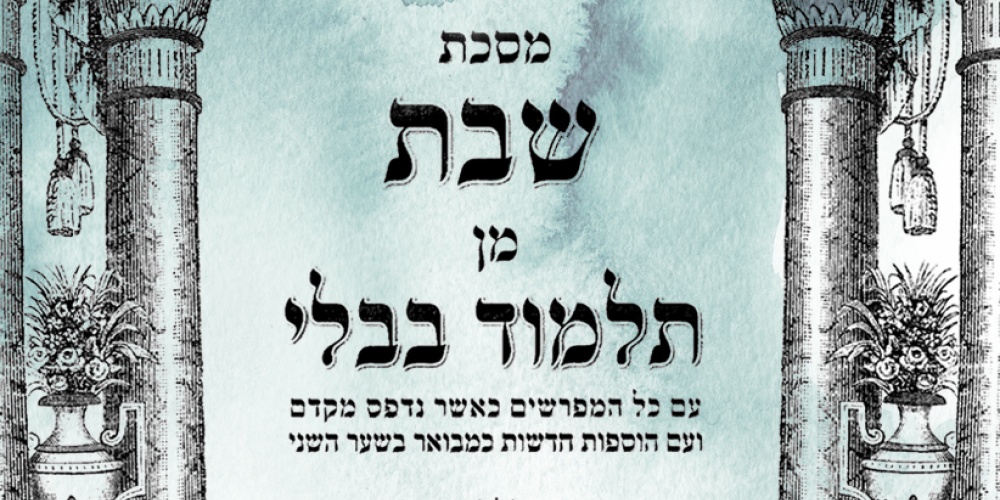
One of the changes accompanying the creation of the State of Israel is the flourishing of the study of Tanach. Returning to our ancient homeland, and able to see with our own eyes where much of the Tanach actually happened, the Tanach comes alive in ways it just cannot outside of the Land of Israel. Furthermore, there has been a return to placing much greater emphasis on the pshat[1], the plain meaning of the text[2]. The output of first rate parhsanut hamikra is a pleasure to behold, opening new allowing us to greatly benefit from “the pshatim that renew each day” (Rashbam, Breisheet 37:2).
Throughout much of our history Torah exegesis has focused on derash, the additional layers of meaning of the text, meaning derived from reading between the lines of the text. The reason for this is clear. The vast majority of Torah law is derived via derasha. If we only followed the pshat of the Torah Jewish life would be unrecognizable. There would not be 39 forbidden melachot of shabbat, we could eat a cheeseburger and there would be no obligation to daven. While there are thousands upon thousands of Biblical laws that we are meant to follow, only 613 of them are directly mentioned in the Bible – the rest either being based on Oral traditions dating back to Moshe Rabbeinu or more often derived through hermeneutical rules nowhere mentioned in the Biblical text.
So primary is the derasha that even when it contradicts the pshat we are bound by the derasha. Thus while “an eye for an eye” may mean exactly that on a pshat level, the halacha forbids such a punishment. And it is for this reason that Shavuot need not be on a Sunday, despite the fact that the Torah clearly says otherwise[3].
It was only in the 19th century, faced the external challenges of Biblical criticism and the internal one of the rejection of much of the rabbinic tradition, that some of our rabbinic greats turned their attention to a deeper understanding of the relationship between pshat and derash. Commentators such as The Ketav v’Kaballah, The Netziv, Malbim, Mesech Chochmah, Torah Temimah, each in their own way, stressed the connection between the Biblical text i.e. pshat and its rabbinic interpretation, i.e. derash. In other words they tried to demonstrate that even if it may not appear so on the surface, oftentimes the derash is hinted at in the text, often reflecting a deeper understanding of the pshat. Nonetheless, this study was less interested in pshat per se but in demonstrating the link between the Written and Oral law. It is only with our return to the Land that this has begun to change.
Despite some of the greats who were expert in Tanach, the study of any form of Tanach - pshat or derash - was at best of secondary importance in the world of yeshivot where Talmud reigned supreme. It has been many, many years since derasha was studied as it had originally been composed, as midreshi halacha commenting on the verses of the Torah. These drashot which form the core of Talmudic learning have, for many, been shorn from the text on which they commented. Spending much time on the study of Tanach was not something a serious student of Torah did, focusing instead on the “Sea of Talmud” which was the foundation of Jewish law[4]. It was a radical innovation when the Netziv gave a daily shiur on chumash in the Volozhin yeshiva[5].
The emphasis on derash is not a new phenomenon.
“Rav Kahana said. 'I was eighteen years old and had learned the entire Talmud[6], and yet I did not know that a verse does not depart from its plain meaning until now'” (Shabbat 63a). Astounding! Rav Kahana did not know there was any inherent meaning to the written word of the text, understanding only a non-literal meaning of the text.
It took a debate about the laws of carrying on shabbat for Rav Kahana to understand that the pshat also has much value. The Mishna records a debate between Rabbi Eliezer and the Sages as to whether a soldier may go out on shabbat (in a place with no eiruv) ”carrying” his military equipment. The Sages forbid such as they are “nothing other than reprehensible, as it is written: ‘And they shall beat their swords into plowshares and their spears into pruning hooks; nation will not raise sword against nation, neither will they learn war anymore’” (Shabbat 63a). Rabbi Eliezer disagrees, arguing that they “are ornaments for him”.
In explaining the view of Rabbi Eliezer the Gemara quotes the verse “Gird your sword upon your thigh, mighty one, your glory and your splendor” (Tehillim 45:4), to which Rav Kahana responded that this verse is referring “to the words of Torah” - the true glory of the Jewish people. Rav Huna responded that while the verse may also refer to Torah “a verse does not depart from its pshuto, its plain meaning”. It was at this point that Rav Kahana exclaimed that despite being ‘baki beshash’, an expert in all of rabbinic literature, he never knew that the words of the Torah had anything but metaphoric meaning.
What is most beautiful about this exchange is that Rav Kahana’s surprise is related to a verse about war. In his mindset it was not possible that there could actually be any literal meaning to a verse which praises the ornaments of war. Cleary such could only be a metaphor for Torah where all who fight are on the same side.
Sadly, there are times when there is no choice but to take pride in military accomplishments. May that time end soon and may we merit to witness the prophecy of Yishayahu that “Nation will not raise sword against nation, neither will they learn war anymore”.
[1] Defining pshat and the line between it and derash is no simple task and much ink has been spilled on this topic. Pshat is much more – and at times not even – the literal meaning of the text. One approach might be how the verse was understood by the people when they received the Torah. Or how the verse is to be understood in its context, a context which the derash might often ignore.
[2] Like all “innovations” this has stirred not a little controversy
[3] In this and similar situations it is imperative to ask why the text is written in ways we do not follow in practice. This is something I briefly and incompletely address here.
[4] Why and how the great Lithuanian yeshivot separated the study of Talmud from its practical halachic conclusion is a fascinating discussion beyond the scope of this devar Torah.
[5] Luckily, his reputation as a Talmudic scholar was already well established. Sadly, those whose early greatness was demonstrated in expertise in Tanach were labelled as not serious scholars. It is to avoid such that it is told that Rav Meir Simcha of Dvinsk was advised to hold off publishing his biblical masterpiece, the Mesech Chochmah, fearing such would prevent him from being taken seriously as a Talmudic genius, a fate that likely faced the Malbim. Rather, he should first publish his commentary on the Rambam, the Or Sameach and with only his reputation established should he publish the Mesech Chochmah. I do not know if this story is factually true but it certainly could be.
[6] Considering that he lived before the Talmud was completed this likely refers to the entire Mishna and the many teachings of the Amoraim in prior generations.



